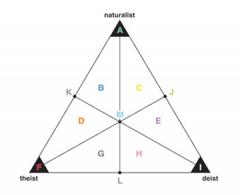
This Article From Issue
July-August 2007
Volume 95, Number 4
Page 292
DOI: 10.1511/2007.66.292
To the Editors:
In "Mirror, Mirror" (Macroscope, November-December 2006), Gay A. Bradshaw and Robert M. Sapolsky argue that the apparent similarities we see between ourselves and chimpanzees are not anthropomorphic illusions but veridical reflections of evolutionary continuity. Hence we should feel no qualms about projecting ourselves onto them (or onto other animals) or about extrapolating directly from them to us, because evolutionary continuity specifically licenses such unfettered bidirectional psychological inferences between species. Although this proposal neatly sidesteps long-
acknowledged barriers to inter-species inference, it runs afoul of the very evolutionary principles to which it appeals.
First, Drs. Bradshaw and Sapolsky don't mean what most others do when using the term evolutionary continuity, namely that there must be some historical sequence of change that links the behavior and psychology of chimpanzees and humans. Rather, they mean that the behavior and psychology of humans and chimpanzees are largely the same; thus their conclusion that the roots of violence in both can be revealed by an understanding of either one.
While appealingly simple, this view of continuity (qua identity) is decidedly nonmodern and is better aligned with outmoded Victorian views based on the Great Chain of Being, which cast evolution as a linear, ladder-like process of steady improvement culminating in humans. Oddly, it is exactly this outmoded view that might actually license Drs. Bradshaw and Sapolsky's procedure of bidirectional (mirror-mirror) inference between humans and chimpanzees—i.e., back and forth along adjacent rungs of a ladder. In stark contrast, modern biology models evolution as a bush, with extant species representing the tips of branches of varying length reflecting changes since separation from common historical ancestors.
Hence, to make inferences directly between extant species, as Drs. Bradshaw and Sapolsky propose, is to look blindly across branch tips rather than along branch lines through common ancestors, which is the route evolution actually took. In other words, it is to dispense with the thorny but inevitable component of historical change among descendant species that defines evolution and that comparative biologists must therefore grapple with.
Ultimately then, bidirectional inference does not embrace evolution, as Drs. Bradshaw and Sapolsky argue, but specifically ignores it.
Drew Rendall, John Vokey, Louise Barrett and Peter Henzi
University of Lethbridge
Alberta, Canada

American Scientist Comments and Discussion
To discuss our articles or comment on them, please share them and tag American Scientist on social media platforms. Here are links to our profiles on Twitter, Facebook, and LinkedIn.
If we re-share your post, we will moderate comments/discussion following our comments policy.